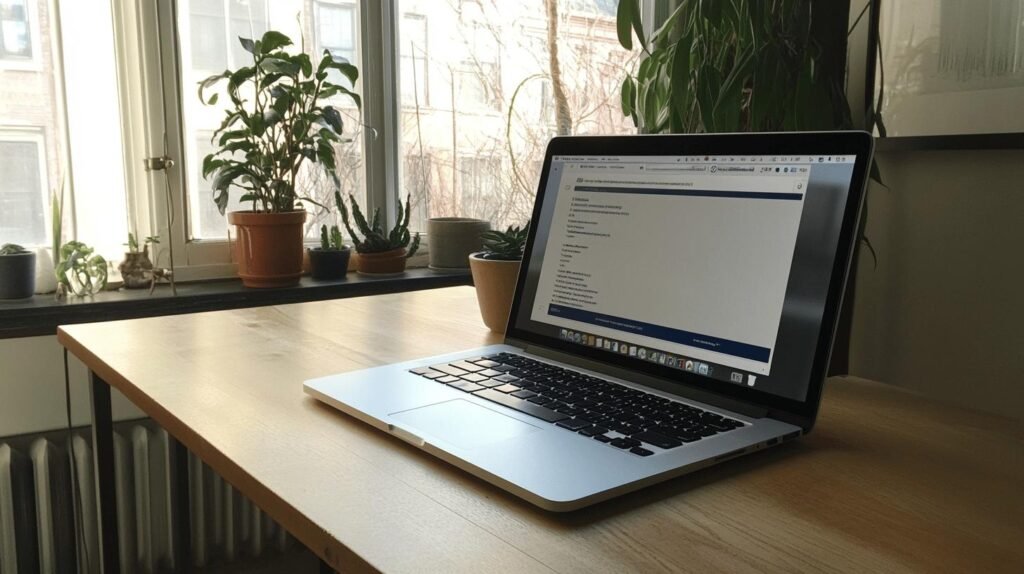Have you ever questioned if top-notch creative work demands an extravagant price tag? In our fast-paced tech landscape, we believe that affordable creative notebooks should empower artists without draining budgets. We examine laptops that blend robust processing power, advanced graphic capabilities, and extended battery life—essential for Adobe’s resource-intensive applications like Photoshop and Illustrator. With innovations like fanless designs and brilliant high-resolution displays, we illustrate how these budget-friendly options inspire creativity at every step. Join us as we unravel the perfect balance between cost and performance for digital artists.
Detailed Reviews of Budget Laptops for Photoshop and Illustrator
Our evaluation criteria emphasize processor performance, graphics capability, and display quality. We focus on laptops that shoulder demanding creative applications such as Photoshop and Illustrator without breaking the bank. Each device is scrutinized for chip efficiency, integrated graphics proficiency, and display calibration, ensuring true-to-life color representation that professionals rely on to achieve detailed design work.
The M4 MacBook Air stands out as a benchmark for budget-friendly creative systems. Its next-generation M4 chip delivers significant performance improvements over previous models and supports a fanless design that minimizes distractions during intensive editing sessions. The laptop’s aesthetic appeal is bolstered by its lightweight 13-inch variant, weighing around two pounds, ideal for mobility. Available in silver, sky blue, and Starite, the design carefully avoids the midnight option due to noticeable fingerprints on that finish. Its display, engineered for a billion colors at 500 nits brightness, guarantees outstanding color accuracy, providing a crisp canvas for precise image work. Pricing nuances, including education discounts and trade-in credits, further enhance its appeal as a wallet-friendly Photoshop system.
Alternatives with older chip generations remain viable for creative users seeking additional savings. The M2 MacBook Air offers respectable performance improvements over legacy devices, maintaining a balance between cost and capability. Meanwhile, refurbished M1 models have proven competent for everyday graphic design tasks despite slightly older technology.
These options demonstrate that cost-effective art creation devices are not limited to cutting-edge tech; they are versatile enough to handle professional workflows while accommodating tighter budgets.
Performance and Compatibility Analysis: Best Budget Laptop for Photoshop and Illustrator
Matching hardware specifications to the demands of Adobe software is crucial. When running resource-intensive applications such as Photoshop and Illustrator, systems must deliver consistent processing speeds and reliable thermal management. A laptop optimized for creative apps ensures that intensive graphic tasks are executed without lag, frame drops, or overheating. This level of compatibility provides creative professionals with a stable environment that supports detailed image editing and design workflows.
The M4 chip epitomizes the technical advances required of modern budget laptops. Its advanced architecture offers discrete improvements over older Intel-based or early M-chip devices. A fanless design not only minimizes noise but also enhances thermal management, ensuring that performance remains steady even during prolonged editing sessions.
Additionally, the display is calibrated for a billion colors with 500 nits of brightness, delivering precise color reproduction and impressive clarity. Robust battery performance—lasting up to 18 hours—allows users to engage in extended creative projects without interruptions, further optimizing workflow efficiency.
Reliable hardware is vital for uninterrupted design sessions. Consistent processing power and effective heat management reduce unexpected slowdowns, while accurate display calibration improves visual fidelity during detailed edits. Ensuring that laptops meet these budget-friendly photo editing specs is essential to maintain precision and productivity, making them ideal low-price Illustrator machines for creative professionals.
Final Words
Our analysis dissected performance metrics, design efficiencies, and cost trade-offs that power creative software like Photoshop and Illustrator.
We compared modern chip advancements and display technologies with proven, budget-conscious alternatives. Our review detailed key features such as fanless operation, excellent color accuracy, and extended battery life.
These insights empower informed decisions while balancing affordability and functionality.
Embracing these guidelines ensures you secure the best budget laptop for photoshop and illustrator, ultimately enhancing your creative workflow and delivering reliable, measurable results.
FAQ
Q: What specs do I need for Photoshop and Illustrator?
A: A laptop for Adobe Creative Suite needs at least 16GB RAM, a multi-core processor (Intel i5/AMD Ryzen 5 or better), and a color-accurate display with minimum 1080p resolution.
Q: What’s the best budget laptop for Photoshop under $1000?
A: The M1 MacBook Air offers excellent value with its powerful chip, 16GB RAM option, and color-accurate Retina display. Refurbished models often sell for under $1000.
Q: Are 2-in-1 laptops good for Photoshop?
A: The Lenovo Yoga 9i and ASUS ProArt PX13 excel at creative work, offering touchscreen functionality, pen support, and powerful processors ideal for Photoshop tasks.
Q: How much storage do I need for Adobe Creative Suite?
A: We recommend minimum 512GB SSD storage for Adobe Creative Suite. This provides enough space for program files, active projects, and asset libraries.
Q: Can I run Photoshop on integrated graphics?
A: Modern integrated graphics like Intel Iris Xe and Apple’s integrated GPU handle Photoshop effectively. A dedicated GPU provides faster rendering but isn’t essential.
Q: Which display features matter most for design work?
A: Look for displays with 100% sRGB coverage, minimum 300 nits brightness, and anti-glare coating. Higher resolution (1440p or 4K) enhances detail visibility.



